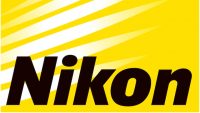Nikon Offsets Shrinking Camera Sales with Tech Components
April 18, 2022
Nikon Corp. is restyling itself from a company that primarily manufactures cameras to one that supplies components to other businesses. Its consumer market share eroded by smartphone image systems, the Japanese company’s revenue also plunged, dropping by about 50 percent since its 2013 peak of $8 billion. In February, Nikon upped its revenue forecast for the year ended March 31 to $4.35 billion, more than $370 million of it projected as operating profit, thanks in large part to components, which is expected to earn more profit than any other division, nosing past imaging.
Components tallied $53 million in profits from Q1-Q3, up more than 80 percent year-over-year, as compared to $49.8 million for imaging in the same period, a 10.7 percent increase. The next-largest profit category, precision business equipment, was pegged at $24.5, according to the company’s latest financial statement, dated February 3.

“Revenue from imaging is on the up and looks to be returning to near-parity with 2019, along with a subtle shift in Nikon’s underlying core strengths,” writes PetaPixel, which expects camera prices industry-wide to increase by as much as 25 percent from 2022 through 2023.
The corporate reinvention is credited by Bloomberg to Nikon CEO Toshikazu Umatate, who “is seeking to reposition Nikon as a provider of components for the chipmaking industry” in addition to creating healthcare products and other industrial products while seeking to maintain a position in the digital camera market.
“Booming demand for semiconductors and related chipmaking equipment is also bolstering Nikon’s growth outlook, even though it no longer offers the most advanced lithography equipment machines that etch circuits onto chips,” Bloomberg writes.
Dutch company ASML Holding NV now dominates the high-end of that market after having developed “machines that use a technology called extreme ultraviolet lithography, enabling Intel Corp., Samsung Electronics Co. and others to create the most advanced chips found in devices.”
Umatate’s mid-term plan for Nikon targets operating profit of $554 million on sales of $5.5 billion yen in fiscal 2025. “Part of that will involve mergers and acquisitions,” Bloomberg reports, noting that Umatate says he’s set aside anywhere from $1.6 billion to $2.4 billion “for deals, possibly involving some of more than 100 billion yen,” or nearly $800 million.
The Nikon CEO is chasing profits through growth, not cuts, according to Bloomberg, which says “he’s seeking to retrain and refocus the company’s staff of almost 20,000” and “plans to double domestic hiring for the current fiscal year, to 570 employees, the most in a decade.”
While the company has new technology, like the Lasermeister, a laser 3D printer that creates titanium-alloy parts, it is also “pouring research and development” into establishing the Nikon Z Series system as a world-class still and video capture line, with Z-mount lenes “designed to last as long as the F-mount,” writes PetaPixel. “That should reassure consumers who are looking at the brave new mirrorless world.”

No Comments Yet
You can be the first to comment!
Sorry, comments for this entry are closed at this time.